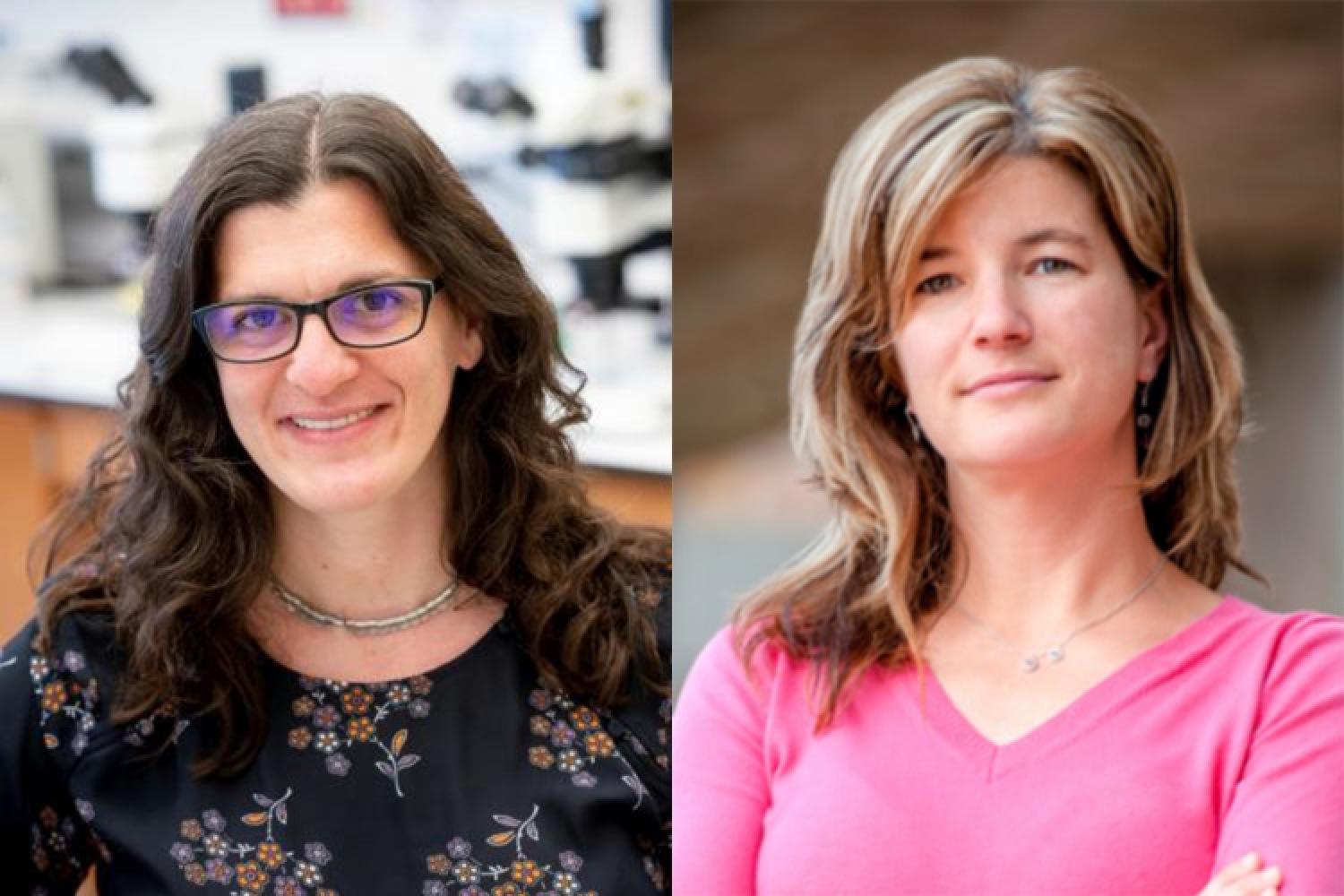Calve, Ferguson advance research on mechanisms leading to tissue degradation
Associate Professor Sarah Calve and Professor Virginia Ferguson, both of the Paul M. Rady Department of Mechanical Engineering, have received a $1.6 million grant from the National Institutes of Health for research they hope will help inform regenerative therapies to replace tissue or organs that have been damaged by disease, trauma or congenital issues.
“The funding will help us to build off our current research but also take it some new directions,” Calve said.
A key aspect of Calve and Ferguson’s research is the analysis of how muscles and tendons, which all develop separately in the human body and are composed of different materials, merge into a complex interface called the myotendinous junction (MTJ).
The MTJ itself is made up of proteins and molecules, called the extracellular matrix, which structurally connect a muscle to a tendon, which helps facilitate the transmission of forces acting in the human body.
Trying to put two different materials together is a unique challenge for the human body to solve. Calve and Ferguson want to better understand how the human body does it.
“What’s interesting is that tendon is composed of very few cells, for example, but connects directly into muscle, which is highly cellular,” Calve said.
A lot of the focus of Calve and Ferguson’s research is grounded in the more widespread push to manufacture materials that can replace human tissues due to things like injury. “If we don’t even know how nature puts the tissues together,” Calve said, “how could we hope to recapitulate that?”
With the new funding, Calve and Ferguson hope to identify how mechanical loading affects the structural integrity of the extracellular matrix and its role as a link between muscle and tendon.
“We want to figure out how certain forces, such as cyclic loading versus static loading, not only influence the extant structural integrity of the MTJ but how those forces may influence the in-utero development of the MTJ, too,” Calve said.
An example of a static load is when a caregiver washes a patient on a bed positioned low to the ground, so they are stooped for several minutes, which is a long time for your lower back. A dynamic load, on the other hand, is a load that repeats itself at a regular time interval, like the forces acting upon your knees while running.
Calve runs the Musculoskeletal Extracellular Matrix Laboratory (MEML), which typifies the multidisciplinary nature of research that can be found in the mechanical engineering department at CU Boulder.
“Professor Calve’s lab is great because everyone who works in it has very different backgrounds, from mechanical engineering, to chemical engineering, physiology, biological sciences, and molecular, cellular and developmental biology,” Hannah Larson said, a graduate student who recently won a research award for her work in MEML. “The interdisciplinary group gives everyone a really well-rounded perspective.”
Ultimately, Calve and Ferguson’s research hopes to contribute to the development of therapies that would restore functionality to damaged MTJs and beyond.


